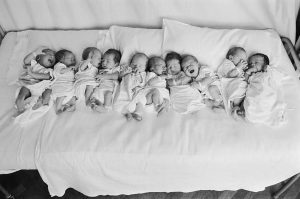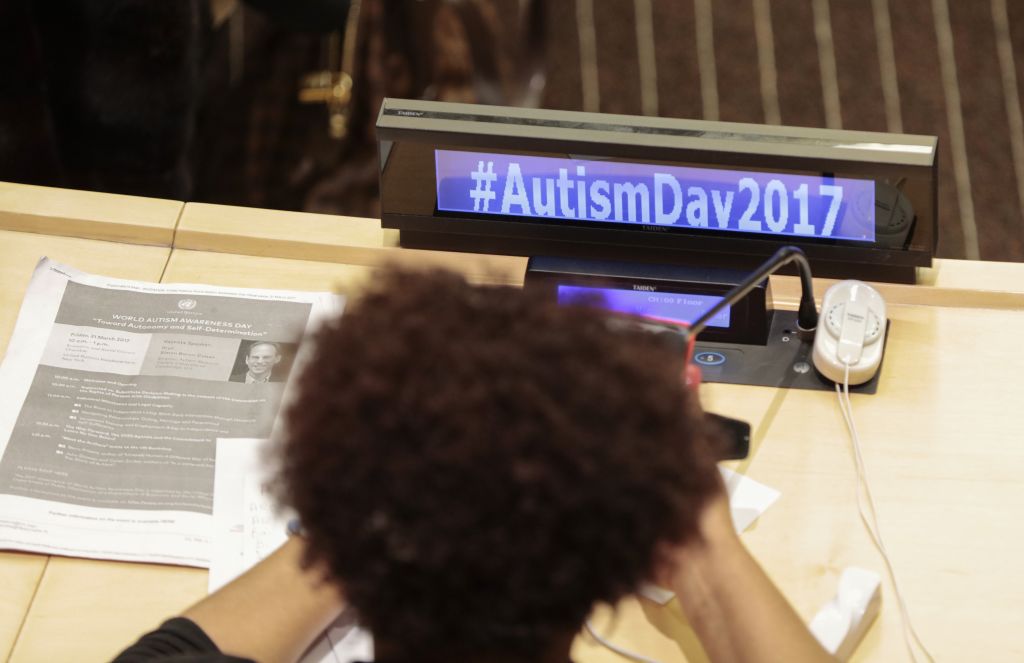Last July, Albert and Anthony Saniger filed a lawsuit against a high-end California fertility clinic after their dreams of having a second boy were destroyed when their surrogate gave birth to a baby daughter. After already choosing male names and Gmail accounts for their future son, the couple had explicitly made clear that no female embryos were to be transferred into the body of their surrogate, who had experienced two failed cycles of in vitro fertilization before a successful pregnancy in 2020.
To add to the trauma of being forced to live with a healthy baby girl instead of a male, the Sanigers were now forced to spend “staggering” amounts of money raising the two boys they wanted and a girl, all bought via costly fertility clinic services. They sued for “reckless and/or intentional” implantation of a female baby. After all, they had already spent more money just for the creation of their babies than most middle-class people spend on their children over the course of a decade. Is it hyperbolic to think immediately of China’s squalid orphanages, filled to the rafters with baby girls that nobody wants? In India, parents devastated not to have sons will drop their newborn daughters off onto the street in baby baskets. Perhaps our hyper-progressive rainbow capitalist culture is no better: anyone, regardless of gender or sexual identity, seems to think themselves entitled to whatever product they can afford. The exploding and largely unregulated surrogacy industry in America represents the total commodification of babies and human life. It targets working-class women as human incubators for the wealthiest people in the world. But contrary to growing popular belief, nobody is morally entitled to buy or have whatever they want, especially a human baby.
In the 1990s, celebrities glamorized and made extremely popular elective caesarean sections, a trend that any evidence-based obstetrical authorities will tell you is both stupid and dangerous. Now the Kardashians and countless other celebrities including Paris Hilton, Priyanka Chopra, at least one of the guys from Queer Eye, Elton John and Perez Hilton are making surrogacy look not only socially acceptable for anyone with the financial wherewithal to outsource their human reproduction, but glamorous. (The photo of Perez posing with his tiny newborn dressed up as Mickey Mouse is not for the faint of heart). A combination of rare infertility issues, vanity, extreme entitlement and capitalist medicine gone hog-wild seem to be the main factors driving more and more commercial surrogacy.
In 2015, more than 2,800 children were born via surrogate mothers in the US. There is surprisingly bad data regarding the number of yearly surrogate births since then, but given the rising demand and availability of fertility clinic services, it has likely risen. Working-class women, many of whom genuinely want to help childless couples have “their own” babies, make easy targets as “gestational carriers.” Commercial surrogacy is broadly defined as an agreement where the gestational carrier is compensated beyond basic medical fees — in the US, surrogate mothers make on average $30,000 to $50,000 per pregnancy.
This process usually begins with IVF, in which pre-fertilized embryos (almost never involving the surrogate) are analyzed for genetic abnormalities (such as female gender) and then implanted into the uterus via cervical catheters. If the IVF embryo successfully implants in the wall of the uterus, which it does roughly half the time, the surrogate will carry the baby and birth it for the buyers. Women who carry twins are compensated more, as twin pregnancies carry higher risks to mother and babies. It is not uncommon for a woman to sign off on carrying a singleton only to find that two fertilized eggs were actually implanted. The circumstances of the baby’s birth are usually determined via extremely detailed and legally tight contract agreements, which explicitly state that the baby belongs to the people who purchased it and not the “carrier.”
As any woman who has carried a baby knows, pregnancy is a seriously demanding task, both physiologically and psychologically. The female body is brilliant when it comes to safely and effectively growing human life; much more than the passive tasks of providing fetal nutrients and incubation occurs during pregnancy. We know now that mother and fetus are connected in extraordinary ways that modern science still doesn’t understand fully. Parts of a baby’s unique genetic material remain in the mother’s body and brain for the rest of her life, connecting them indefinitely. By thirty-four weeks of gestation, research has shown that fetuses have acquired and stored memories from inside their mother’s wombs. What’s more important than what we know about life in the womb for a mother-baby dyad is what we don’t.
Much emphasis is placed on the genetic material provided to create a surrogate pregnancy, less on the maternal environment which sustains it. For the buyers using embryos made from other people’s sperm and eggs, the baby is technically no more theirs than the surrogate mother’s. As biological anthropologist and infant-sleep researcher James McKenna has asserted, there is no such thing as a baby. There is only a baby and its maternal environment. There are no robust studies to examine the long-term effects of separating a baby from its surrogate mother for life. And there are nightmare stories of American surrogate mothers being left to fend for themselves in the instances of undesirable fetal outcomes.
Putting aside the morally dubious practice of paying women to risk their health and mental well-being for the birth of a bought and sold product, the optics of commercial surrogacy are more Baudrillardian nightmare than heartwarming birth story. The photos of Pete Buttigieg and his husband wearing medical wristbands in a hospital bed after a “terrifying ordeal” of the birth of their twins are beyond bizarre, a staged HR simulation of two gay men giving birth — not the woman who was most likely sliced open at thirty-seven weeks pregnant to deliver two infants and then left to recover alone post-surgery. Probably to lighten the weird mood, Buttigieg later dressed up one of the twins as a traffic cone while the baby recovered after birth in the NICU. Even Paris Hilton, who bought her baby out of “fear of childbirth and death” didn’t pose for photos wristbanded in a hospital bed holding a swaddled newborn like Khloé Kardashian, the baby proudly delivered to her like a brand-new pair of $50,000 shoes. At least Khloé was honest enough to admit the serious psychological struggle of bonding with a baby she didn’t gestate. Maybe there’s a good reason we carry our offspring for nine months inside us before meeting them.
I’ve seen other hospital photos of faceless, covered-up birthing women on their backs, legs splayed open on the table while a gooey new baby is passed to glowing new “parents” crying with joy. The complex biological importance of prolonged skin-to-skin contact of baby with mother for the sake of basic mammalian bonding, safe placental delivery and initiation of breastfeeding is of course irrelevant here. It is not uncommon for the buyer(s) and surrogate mother to stay in separate rooms in the same nice hotel after birth. The parents will keep the baby with them and text the recovering surrogate whenever breastfeeding is necessary. For newborns, this is every one to three hours. Other buyers just opt for baby formula.
The US is one of the few developed countries that allow for commercial surrogacy. India, the former rent-a-womb hub of the world, banned it for non-nationals in 2015. I’m sure the stories of destitute pregnant women being chained to beds for the sake of carrying foreigners’ babies did not inspire confidence in the practice. After the ban, cheap surrogacy moved to other poor countries such as Georgia. Before the war, Ukraine was one of the main commercial surrogacy destinations in Europe. France, Iceland and Finland have instated total bans, including of the “altruistic” surrogacy practices currently legal in Canada and Australia. Altruistic surrogacy laws dictate that a woman cannot carry somebody else’s child for any compensation outside of basic medical expenses. Just as we don’t see the rich selling their organs en masse to help those in need, there are not hordes of wealthy people lining up to selflessly carry the babies of the infertile, gay or unwilling. This is a practice primarily driven by the financial needs of working-class women and the desires or artificial need of the wealthy to have “their own” children.
Though our society does not value, and in fact disregards, many robust protections for women and children, the mother-baby dyad should be protected as sacred and not treated as an inevitable machine outcome. Purchasing children is not a human right, and women are not vending machines. Surrogacy does not occur out of any true regard for the physical or emotional needs of the babies being bought. Ban it.
This article was originally published in The Spectator’s August 2023 World edition.

























